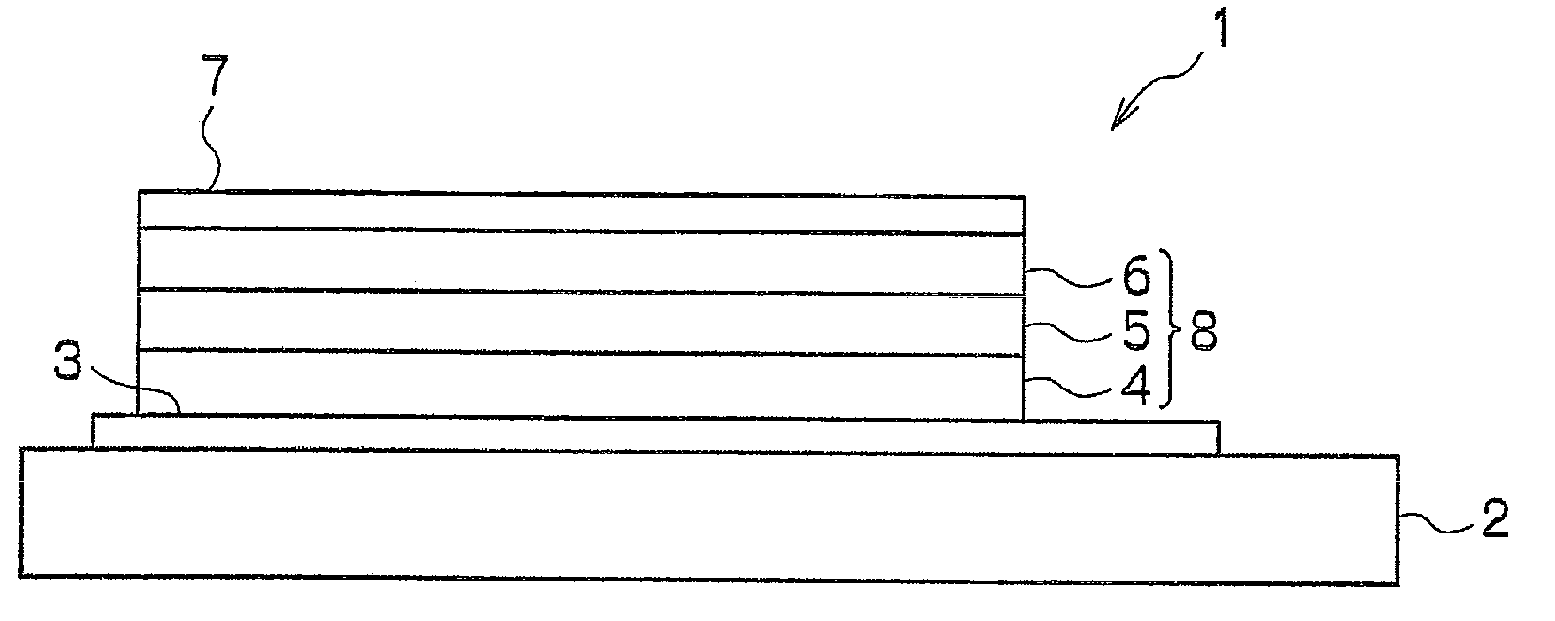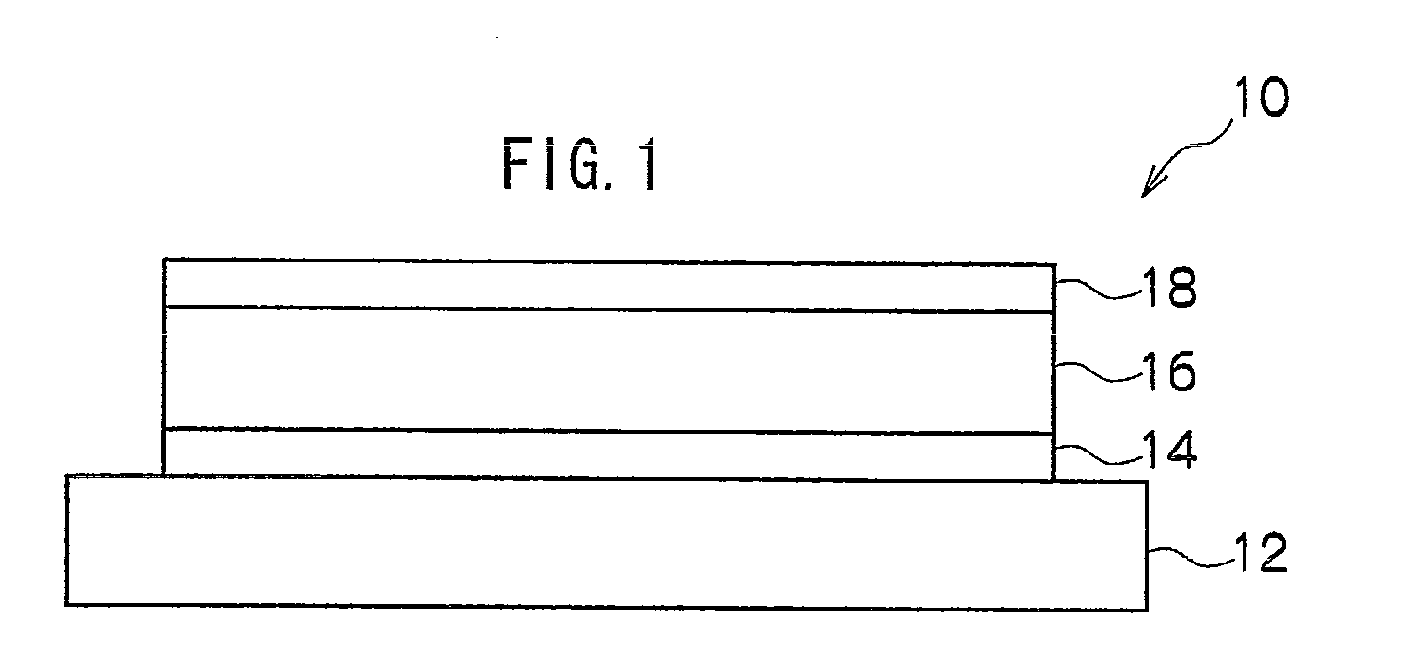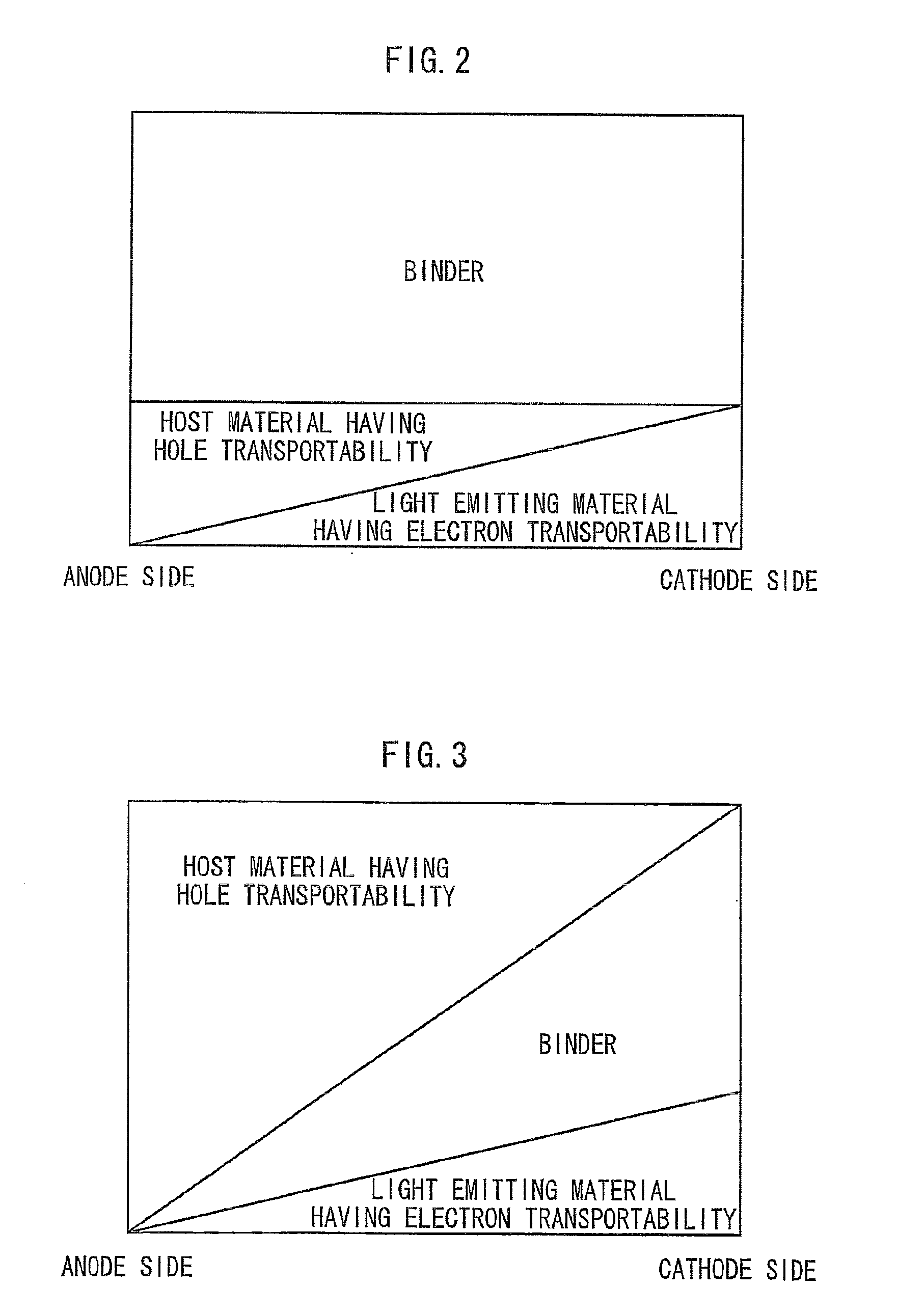Organic electroluminescent device
a technology of electroluminescent devices and organic materials, applied in the direction of electroluminescent light sources, organic semiconductor devices, thermoelectric devices, etc., to achieve the effect of improving driving durability and lowering driving voltag
- Summary
- Abstract
- Description
- Claims
- Application Information
AI Technical Summary
Benefits of technology
Problems solved by technology
Method used
Image
Examples
example 1
[0165]An ITO film (thickness 100 nm) is formed as an anode on a supporting substrate (material: glass), and then using a vacuum deposition apparatus (1×10−6 torr), co-deposition was performed thereon using 2-TNATA (4,4′,4″-tris(2-naphtylphenylamino)triphenylamine), and F4-TCNQ (tetrafluorotetracyanoquinodimethane) in an amount of 1.0% by mass based on 2-TNATA, to form a hole injection layer having a thickness of 160 nm. Subsequently, a film of NPD (N,N′-dinaphthyl-N,N′-diphenyl-[1,1′-biphenyl]-4,4′-diamine) was formed as a hole transport layer having a thickness of 10 nm. The structural formulas of 2-TNATA, F4-TCNQ and NPD are as follows.
[0166]After forming the hole transport layer, a light emitting layer was laminated thereon. The light emitting layer was formed as a mixed layer (thickness 60 nm) by co-deposition using mCP (N,N′-dicarbazolyl-3,5-benzene) as a host material having hole transportability, Pt-1 as a light emitting material (blue light emitting material) having electron...
example 2
[0177]A blue emitting organic EL device having the same layer configuration as in Example 1 was produced in the same manner as in Example 1, except that silicon oxide (inorganic binder) was used instead of the compound A (organic binder) used in the case of forming the light emitting layer in Example 1. The respective concentration distributions of the materials in the light emitting layer are presented in FIG. 4B. The layer configuration, thickness of each of the layers, and the like of the luminescent device are as follows.
ITO (100 nm) / 2-TNATA+1.0% F4-TCNQ (160 nm) / NPD (10 nm) / 26%→0% mCP+74% inorganic binder+0%→26% Pt-1 (60 nm) / BAlq (40 nm) / LiF (1 nm) / Al (100 nm)
[0178]The external quantum efficiency and the luminance half-life of the obtained organic EL device were measured under the same conditions as in Example 1 (hereinafter, the same), and as a result, the external quantum efficiency at 360 cd / m2 was 12.5%, while the luminance half-life was 1800 hours.
example 3
[0179]An organic EL device having the same layer configuration and thicknesses as in the organic EL device of Example 1, except for the light emitting layer, was produced. The light emitting layer was formed using the same materials as those used in Example 1, such that the respective materials have concentration distributions as shown in FIG. 4C. The layer configuration, thickness of each of the layers, and the like of the luminescent device are as follows.
ITO (100 nm) / 2-TNATA+1.0% F4-TCNQ (160 nm) / NPD (10 nm) / 100%→0% mCP+74% organic binder+0%→26% Pt-1 (60 nm) / BAlq (40 nm) / LiF (1 nm) / Al (100 nm)
[0180]The external quantum efficiency and the luminance half-life of the obtained organic EL device were measured, and as a result, the external quantum efficiency at 360 cd / m2 was 13.5%, while the luminance half-life was 2000 hours.
[0181]It is conceived that when the concentration of the binder in the light emitting layer was gradually decreased from the cathode side toward the anode side, ...
PUM
 Login to View More
Login to View More Abstract
Description
Claims
Application Information
 Login to View More
Login to View More - R&D
- Intellectual Property
- Life Sciences
- Materials
- Tech Scout
- Unparalleled Data Quality
- Higher Quality Content
- 60% Fewer Hallucinations
Browse by: Latest US Patents, China's latest patents, Technical Efficacy Thesaurus, Application Domain, Technology Topic, Popular Technical Reports.
© 2025 PatSnap. All rights reserved.Legal|Privacy policy|Modern Slavery Act Transparency Statement|Sitemap|About US| Contact US: help@patsnap.com



